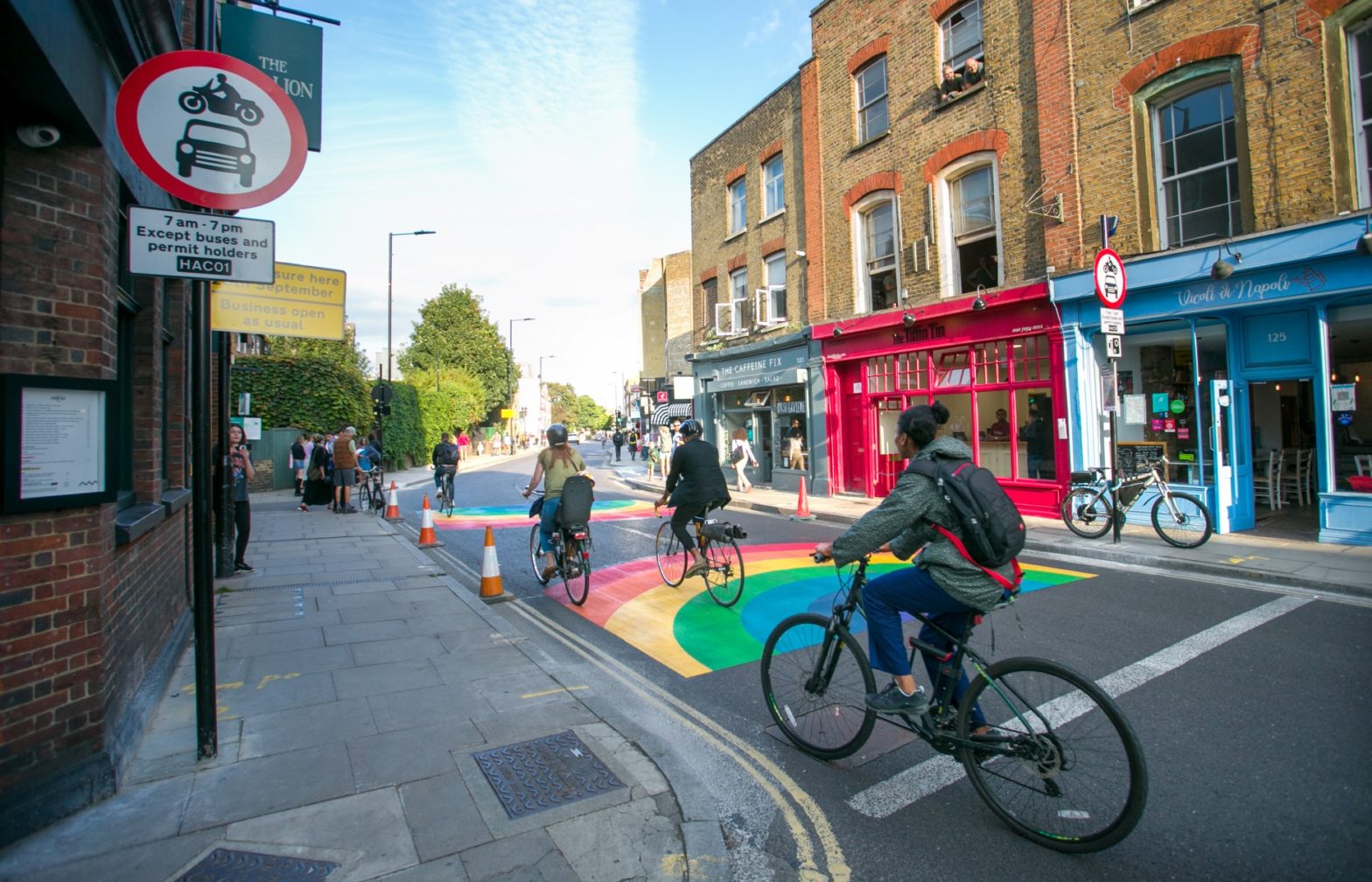
Photo: Hackney council
London borough bids to pilot smart road user charging
23 January 2023
by Christopher Carey
The London borough of Hackney is considering the introduction of a distance-based road user charging scheme as part of its new local implementation plan.
The plan – expected to be passed at a cabinet meeting later today – will allow the council to explore new charging models that could be introduced alongside the existing Ultra Low Emissions Zone (ULEZ), Low Emissions Zone (LEZ) and Congestion Charge, which are run by Transport for London.
London Mayor Sadiq Khan has previously called for the introduction of a pay-per-mile driving charge in the UK capital which could replace all existing road user charges and levy different rates depending on various factors. But he said in January 2022 that the technology to implement such a scheme is still “years away” from being ready.
Speaking to Cities Today, Cllr Mete Coban, Hackney’s Cabinet Member for Environment and Transport, said: “As part of wider plans for road user charging in the ULEZ consultation, we’ve suggested to the mayor that we’d like to be a pilot borough.
“In order to reduce [car] traffic, there are lots of different things you can do, but if you want a real radical and drastic fall in traffic, this can happen with road user charging.”
Coban did not specify how such a charge would be implemented or how much it would cost, saying plans were still in the early stages.
“The problem is that we currently don’t have the power to do this by ourselves just yet, but we have started to speak with our neighbouring boroughs, and are exploring if this is something we can do in a cluster,” he said.
“If the technology is there and we have the power to do it, it’s something we would aspire [to introduce].
“There are different models for road user charging, [and] our officers are working on plans to identify specific roads where there are very high levels of through traffic that lead to heavy congestion, so we’ll be looking at where the hotspots are.
“Without wanting to pre-empt anything, we’d like to put something forward for consultation before bringing in any kind of scheme.”
Low traffic neighbourhoods
Coban also said that the borough’s low traffic neighbourhood (LTN) schemes – traffic filters which already cover 70 percent of its roads – could be expanded even further under the new plans.
“Hackney has the highest number of LTNs in the whole of London – we’ve had 20 new LTNs since 2020, and we will be introducing a further eight which will take us to nearly 90 percent of eligible roads,” he commented.
A recent study of LTNs in London has revealed the schemes have largely been successful at reducing motor traffic.
The study, compiled by climate charity Possible and the University of Westminster’s Active Travel Academy, found that streets within LTNs experience substantial overall falls in traffic, resulting in improved conditions for cyclists and pedestrians.
The mean average decrease in motor traffic on roads within LTNs (a reduction of 815 motor vehicles) was shown to be almost ten times higher than average increases in motor traffic on boundary roads (an increase of 82 motor vehicles), suggesting that LTNs are creating a substantial overall reduction in traffic.
“The research indicates there has been overall traffic evaporation due to these schemes, as the mean average reduction in motor traffic on internal roads is around ten times higher than the mean average increase on boundary roads, adjusting for background trends,” said Professor Rachel Aldred, report co-author and director of the Active Travel Academy.
“This suggests that not only do LTNs have substantial benefits inside their boundaries, but they can also contribute to wider traffic reduction goals.”
Image: Hackney Council












